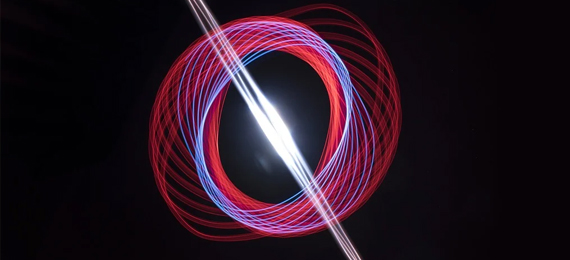
Scientists have photographed the shadow of an atom and it is the smallest thing ever photographed. Let’s have an in-depth look at how the smallest picture ever was captured.
Atom: The Smallest Thing Ever
An atom is a particle of matter and is made up of three subatomic particles namely protons, neutrons, & electrons. It also has a nucleus that is surrounded by one or more electrons and it is the smallest thing ever found.
Smallest Microscopic Image
People once thought that the atom was indivisible but later, it was split and protons, neutrons, and electrons were discovered. Usually, it is not possible to see an atom with naked eyes. It is about 1* 10-10 meters in diameter and it is not even possible to view them through a light microscope. So, scientists started developing many techniques for studying the structure of the atom. But later, David Nadlinger who is the winner of the 2018 Engineering and Physical sciences research council science photography took a picture of a single strontium atom. This photo was named “single atom in an ion trap”.
1. What Is the Smallest Image Ever Captured?
- A. Shadow of Light
- B. Shadow of Atoms
- C. Shadow of Protons
- D. None of the Above
But later, after several studies for the first time, a research team from Griffith university center for quantum dynamics photographed the shadow of a single atom. This team included professor Kielpinski and his colleagues. This is considered the smallest picture ever taken. The team says that they wanted to explore what they could investigate with visible light. They wanted to see how many atoms it took to cast a shadow, but in the end, they realized only one atom was enough.
The major success behind this photograph is the super-high resolution microscope. The microscope allowed the atom to freeze and the shadow of the atom to become dark enough to be viewed under the microscope and the camera. The microscope allowed them to have a look at the deeper and smaller are of the image which was nearly impossible earlier. This made the experiment a huge success.
The special element that has been used in the experiment is Ytterbium in a vacuum chamber. A laser beam which is a thousand times wider than the atom has been passed on the single atomic ions of the element Ytterbium i.e the shadow of the atom is smaller than the wavelength of the laser beam. Ytterbium has the tendency to strongly absorb the color lasers that have been passed. This is one of the main reasons why Ytterbium is chosen. So, once the laser is shot the element absorbs a portion of the light. The microscope then freezes the atoms, and it results in a shadow that is magnified by lenses attached to the microscope. This shadow of the Ytterbium was cast on a CCD detector and the smallest microscope image was captured.
Now, the group is working to get a clearer version of the images by increasing the resolution of the images. The scientists firmly believe that this shadow imaging technique will someday help them study the DNA present in the living cells by passing a laser beam at them. Other advantages of this include determining the type of light needed to watch some biological processes without harming them. This technique may also help in other genetic research, cryptography, etc.